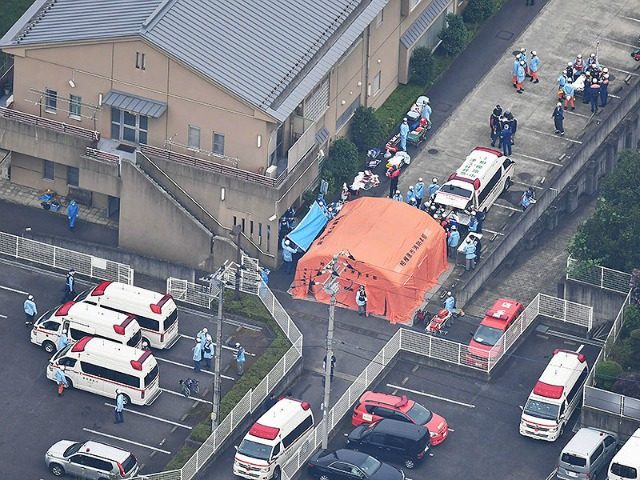Japan’s strict immigration laws have made it an oasis from Islamic terrorism, with a whopping 99 percent of Muslim refugee petition requests rejected. This has not immunized it from mass murder in general, however, as the latest massacre at a facility for the disabled proves.
Unlike the religious targeting common in Islamic attacks, some Japanese have taken to killing the elderly, the disabled, and those who depend on others to live due to medical conditions. Satoshi Uematsu, the 26-year-old who killed 19 and seriously injured 26 others at a Sagamihara center for the disabled, made clear to police the intention of his attack Monday: “I hope that disabled people will disappear.”
In February, he had been admitted to a mental health facility himself after telling coworkers, “I will undertake the mass murder of heavily disabled people at any time if I receive an order from the central government.”
Uematsu broke into the facility at around 2:10 a.m., tied up its employees, and began stabbing his victims to death one by one.
Uematsu previously worked at the facility, and the Japanese newspaper Asahi Shimbun notes he had left indications he was planning a massacre. Among them – a letter to the speaker of Japan’s House of Representatives advocating for euthanasia, according to another Japanese newspaper, the Mainichi Shimbun. Sources tell the newspaper that the letter, which Uematsu tried to personally deliver to Speaker Tadamori Oshima in Tokyo,” called for a “society in which people with disabilities can undergo euthanasia.”
While the attack is the deadliest in nearly two decades, its targets and perpetrator – an employee who had to care for those who could not care for themselves – make it the latest in a string of similar killings. Japan has an outstandingly small record of mass murders, but individuals killing the defenseless serially is not unheard of. In February, the same month Uematsu reportedly began speaking of his attack, another care facility worker, Hayato Imai, was arrested for killing three people in a nursing home. Imai pushed his victims off a balcony, claiming their deaths as accidents. The victims were 87, 86, and 96 years old. The deaths all occurred in 2014.
Japan’s ballooning elderly population has created significant strain both on the government and on those who must pause their lives to care for the elderly. Many are unable to send their relatives to nursing homes because the nursing homes are simply full. More than half a million elderly Japanese are on waiting lists to be put into nursing homes, and only slightly fewer people – 490,000 – reportedly left their jobs to care for their older relatives in 2012.
The combined economic impact of such a large elderly population and the mental health consequences on family caregivers led Deputy Prime Minister Taro Aso to make the alarming call to Japan’s elderly in 2013 to “hurry up and die.”
While mass attacks are rare, individual murders of disabled and elderly people are on the rise. Mainichi notes that 44 disabled people were killed between 2010 and 2014; alarmingly, nearly half of those murders were committed by caregivers forced to provide 24-hour care, many showing evidence of sleep deprivation. In cases involving the murder of someone who needs personal care by the caregiver, 70 percent of perpetrators are men. (70 percent of caregivers in Japan in general are women.)
The elderly are also performing a significant number of these murders, with a 2012 study finding the overall homicide rate declining in Japan while homicides among the elderly were rising. In many of these studies, the murderer is the victim’s spouse and commits suicide shortly after.
Caregiving murders have become common enough that the media have coined the term “kaigo satsujin” to describe them.
When not killed by their caregivers, the disabled and elderly often become victims of abuse. A government report released in February found the number of cases of abuse in nursing homes to have doubled between 2012 and 2014.

COMMENTS
Please let us know if you're having issues with commenting.